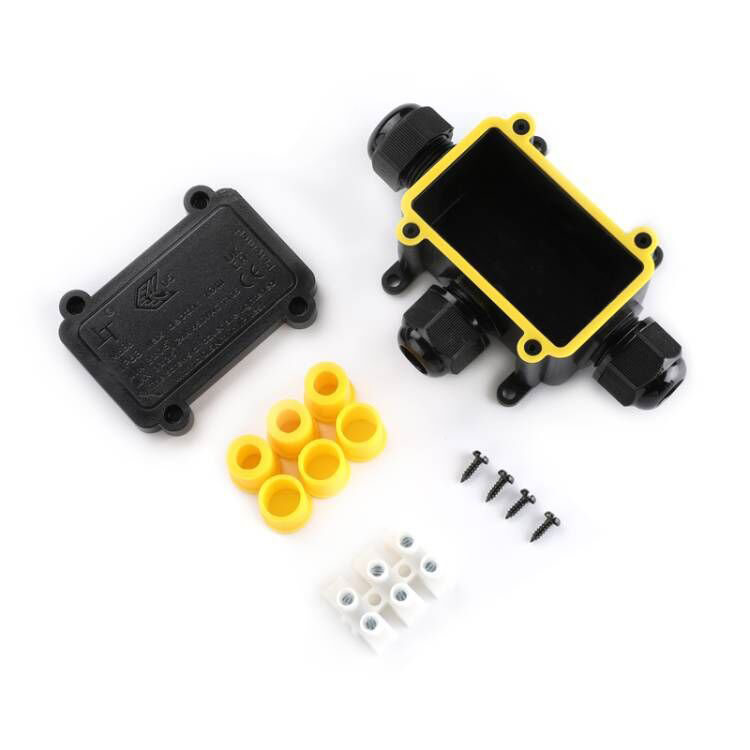Characteristics of Waterproof Junction Boxes
2024-05-31
A waterproof junction box is an enclosure designed to protect electrical connections from environmental factors such as water, dust, and moisture. These boxes are commonly used in outdoor and damp environments to ensure the safety and integrity of electrical systems. Here are the key aspects of waterproof junction boxes:
Characteristics
1. Material: Typically made from durable materials such as plastic (e.g., polycarbonate or ABS), stainless steel, or aluminum. The choice of material depends on the application and environmental conditions.
2. Sealing: Equipped with seals or gaskets around the lid and entry points to prevent water ingress. Silicone, rubber, or neoprene gaskets are commonly used.
3. IP Rating: Rated according to the Ingress Protection (IP) scale, indicating the level of protection against dust and water. Common ratings for waterproof junction boxes include IP65, IP66, IP67, and IP68, with higher numbers indicating better protection.
4. Mounting Options: Can be surface-mounted or flush-mounted, depending on the installation requirements.
5. Cable Entry Points: Features multiple entry points for cables, often fitted with grommets or cable glands to maintain the waterproof seal.
Applications
1. Outdoor Lighting: Protects connections for garden lights, street lights, and other outdoor lighting systems.
2. Marine Environments: Used on boats and docks to protect electrical connections from water exposure.
3. Industrial Settings: Ensures safe connections in factories, especially in areas with exposure to water or moisture.
4. Underground Installations: Protects electrical connections in underground systems like irrigation controls and outdoor power outlets.
5. Construction Sites: Temporary installations where protection against the elements is crucial for safety.
Advantages
1. Protection: Shields electrical connections from water, dust, and other environmental hazards, reducing the risk of electrical shorts and corrosion.
2. Durability: Designed to withstand harsh conditions, ensuring long-term reliability.
3. Safety: Enhances safety by preventing water ingress, which can cause electrical failures and hazards.
4. Versatility: Suitable for a wide range of applications and environments.
Considerations
1. IP Rating: Choose a junction box with an appropriate IP rating for the specific environment and level of protection required.
2. Material: Select a material that provides the necessary durability and corrosion resistance for the intended application.
3. Size and Capacity: Ensure the junction box is large enough to accommodate all connections and components.
4. Installation: Proper installation is crucial to maintain the waterproof integrity. Follow manufacturer guidelines for sealing and securing the box.
Installation Tips
1. Proper Sealing: Ensure all gaskets and seals are properly fitted and intact to maintain waterproof protection.
2. Cable Management: Use appropriate cable glands or grommets to seal cable entry points and prevent water ingress.
3. Secure Mounting: Mount the junction box securely to prevent movement or damage, especially in outdoor or exposed locations.
4. Regular Inspection: Periodically inspect the junction box and seals to ensure ongoing protection and address any signs of wear or damage.
Conclusion
Waterproof junction boxes are essential for protecting electrical connections in environments exposed to water and moisture. By providing robust protection against the elements, these boxes ensure the safety, reliability, and longevity of electrical systems. Proper selection, installation, and maintenance of waterproof junction boxes are key to achieving optimal performance and protection in various applications.



